Site 14: New Church
 |
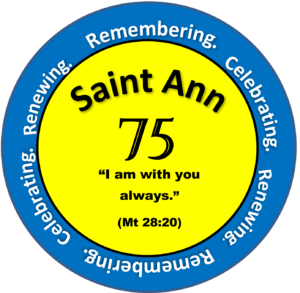 |
En Español |
|
|
After a decade of planning and fundraising and over two years of demolition and construction, our new church building was completed in late 2004. The original cornerstone and the new cornerstone (cut from stone taken from the original church) flank the main entrance to the narthex.
Even before the formal dedication of the new church, the first Christmas Masses were celebrated in 2004. Every pew was filled. The altar and surroundings were abundantly decorated with red poinsettia plants and fir trees. And parishioners enjoyed comfortable new pews following two years of Masses on folding chairs in the school gym! Bishop Paul S. Loverde dedicated the new Church on April 30, 2005.
The Narthex: This large space connects the new church building to the existing Parish Hall. It serves as a gathering place for the congregation before and after Masses and other services.
|
|
The Sanctuary: Above the altar is a round stained-glass window, created by Ronald Neill Dixon. It portrays a pelican, an ancient symbol of Christ’s sacrifice, and her young. The pelican will pierce its own flesh and nourish its young with its own blood if there is no food. This image is based on an early Christian symbol of Jesus who gave his life for us and continues to feed us with his body and blood in the Eucharist. The nest around the pelican chicks is woven of the Crown of Thorns and palms of victory, and the pelican’s wings envelop the nest in a heart shape. an abstract Cross and vertical lines, representing the love and miracles that flow to us from God through His Son, complete this compelling and exquisite image that graces our new church.
|
|
To the left of the altar is an icon of Saints Ann and Joachim. It was created or “written” by iconographer Sr. Nancy Lee Smith, IHM, for our church. In a talk to the parish, Sr. Nancy interpreted the icon, drawn from the traditional story of the saints’ blessed marriage. She explained that the couples’ embrace, and their conjoined halos and robes show their love and their joy when, after 20 years of marriage, they learned from an angel that Ann would conceive a child. In iconography, the blue of their robes signifies they are from God, and her red shoes suggest Ann is a queen.
|
|
To the right of the altar is a lovely statue of Mary that once graced the original church, first at the main altar and later at the baptismal font in the entrance to the Saint Mary wing.
The eight-foot-tall crucifix hanging above the altar was a later addition to the sanctuary, installed in August 2019. It was custom-made by the Conrad Moroder Art Studio in Ortisei, Italy. The wooden corpus is a “Cristo del Tacca”, modeled after a crucifix by Pietro Tacca (1577-1640), who was a Florentine master sculptor. There is a small original Tacca known as the “Pistoia Crucifix” in the National Gallery of Art in D.C. that has a very similar figure in bronze.
The hue of the cross was carefully matched by the artisans to the wood in the sanctuary. They requested that a sample be sent to Italy – look carefully at the kiosk in the narthex and you will see a small piece of wood still missing!
The crucifix was purchased with donations from several parishioners. It required a professional installation crew due to the complex rigging needed to hang it. The smaller crucifix that first hung in this spot is now in the parish hall.
|
|
The Chapel: Our chapel is entered via the narthex. Its stained-glass windows, altar, chairs, stations of the cross and other furnishings were transferred here from our first chapel (in the space now known as the Saint Ann Room, see History Walk Sites 10 and 11). In recognition of the history of the stained-glass windows, and the link between the old chapel and Saint Ann’s hospital ministry, this chapel was formally named as the Chapel of Saint Cosmas and Saint Damian on the saints’ feast day, September 26, 2019.
The crucifix behind the altar hung above the altar of the original church from 1948 up until the late ‘60s or early ‘70s.
|
|
|
The statue of the Virgin of Guadalupe was purchased in Mexico for our parish. It was blessed and installed in the chapel on December 4, 2016, in time for the annual novena leading up to the Virgin’s feast day on December 12. The statue is moved to the main church for the celebration of the feast day.
The Stairwell: The image of the Risen Lord adorning this space hung behind the altar in the old church from the late ‘60s or early ‘70s until the church came down. It was carved for Saint Ann by master woodworkers in Oberammergau, Germany. Originally it hung with no cross behind it. At the suggestion of the bishop, a cross was added later to meet liturgical norms.
|
|
|
Lower Level: Church administrative offices, Faith Formation, Invictus, and Credit Union offices, meeting rooms and classrooms all share this very busy space.
 |
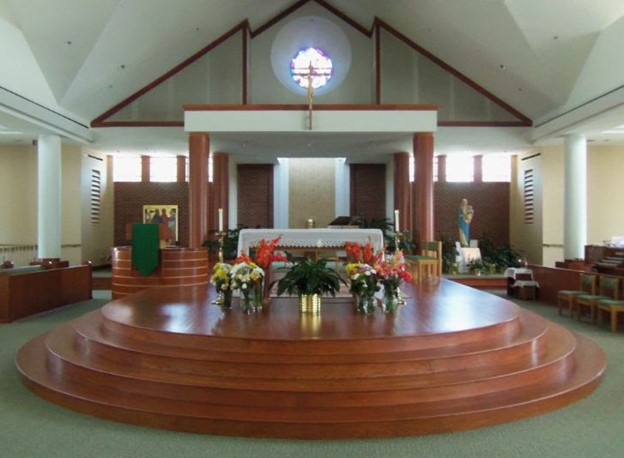 View of Altar c. 2006.
View of Altar c. 2006.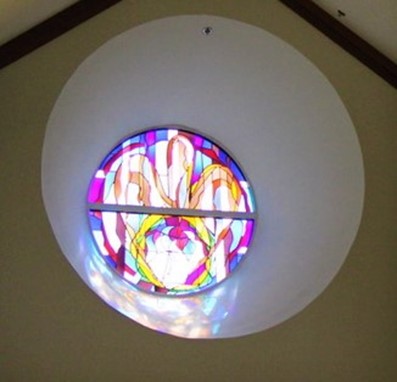 Stained glass window with pelican feeding young with blood, early Christian symbol of Jesus.
Stained glass window with pelican feeding young with blood, early Christian symbol of Jesus.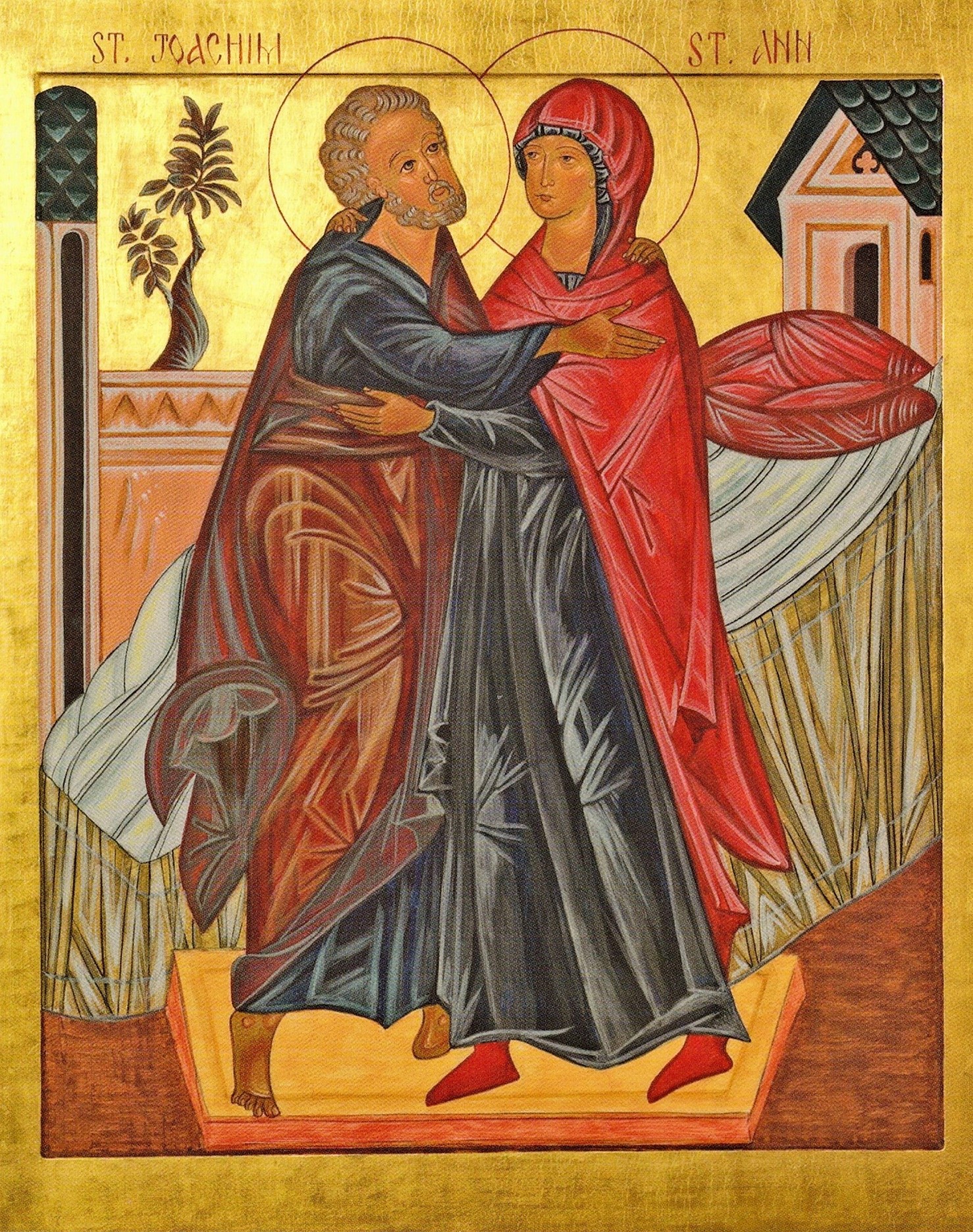 Icon of Saints Joachim & Ann by Sr. Nancy Lee Smith, IHM.
Icon of Saints Joachim & Ann by Sr. Nancy Lee Smith, IHM.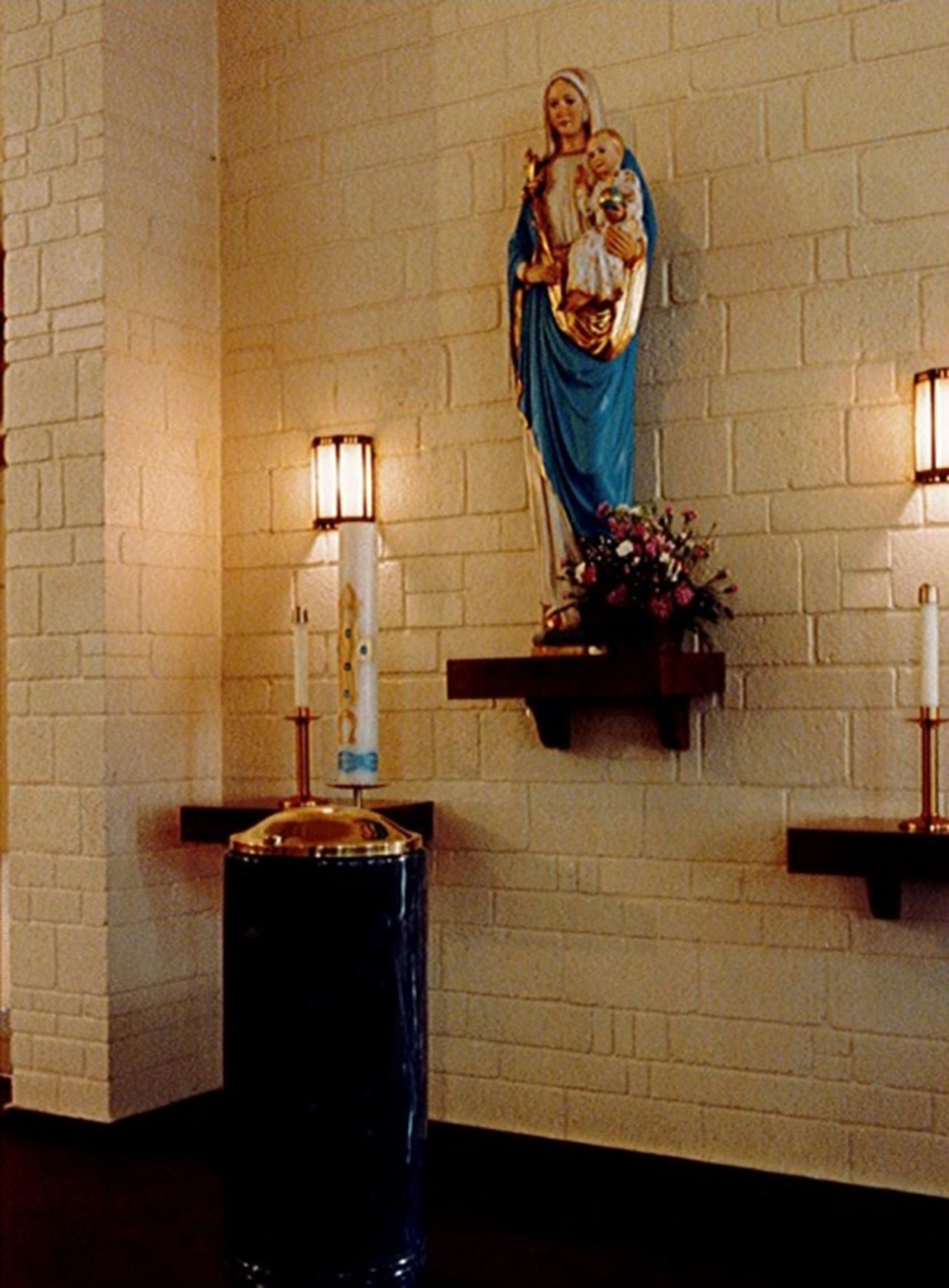 Baptismal Font with Mary, Old Church.
Baptismal Font with Mary, Old Church.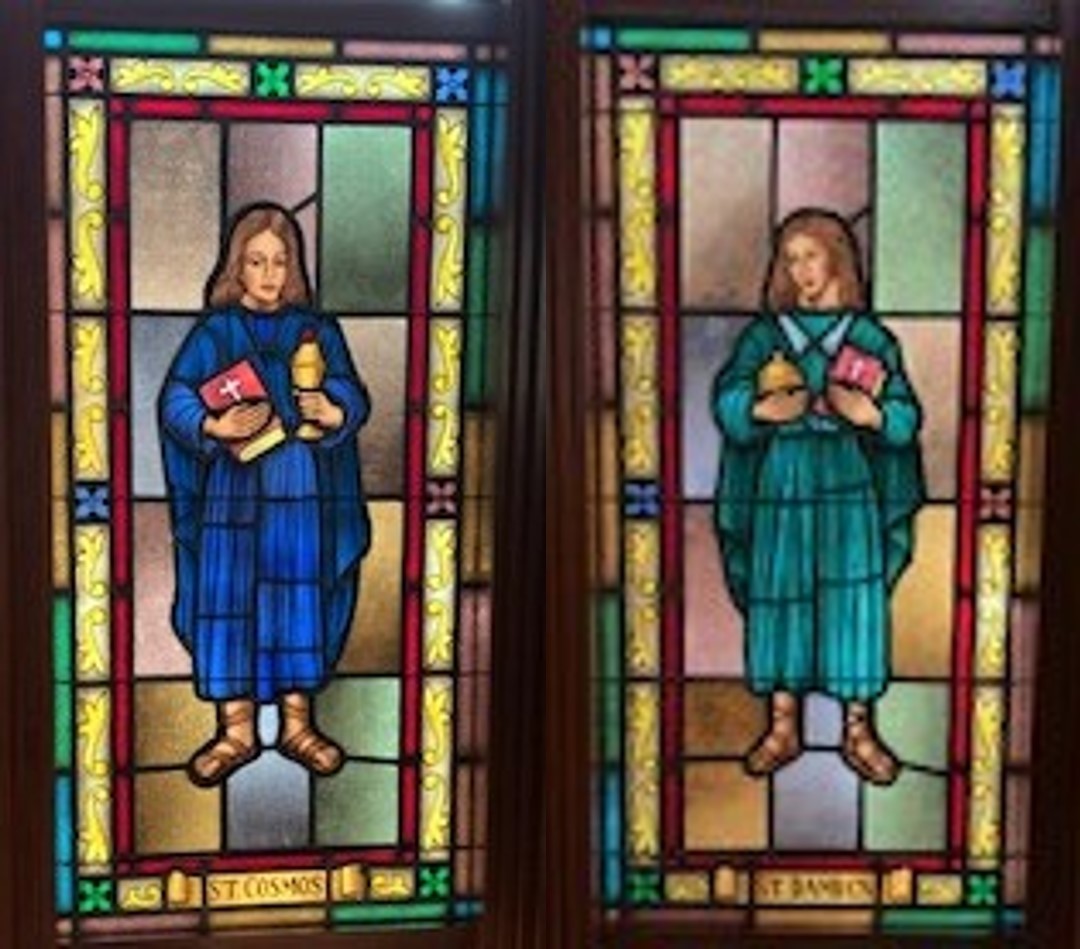 Chapel windows, Saints Cosmas and Damian.
Chapel windows, Saints Cosmas and Damian.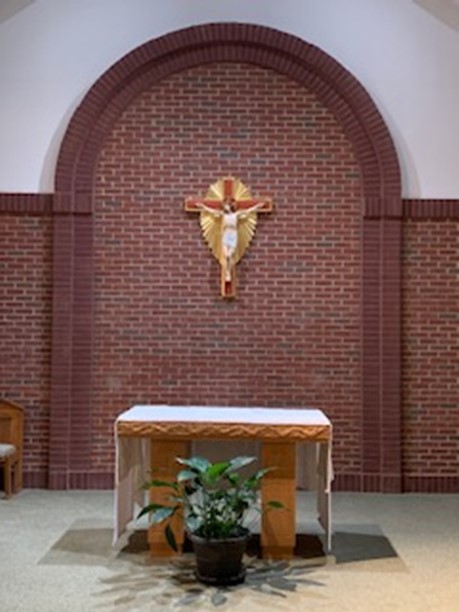 Chapel crucifix, originally hung in old church (1947-1970s).
Chapel crucifix, originally hung in old church (1947-1970s).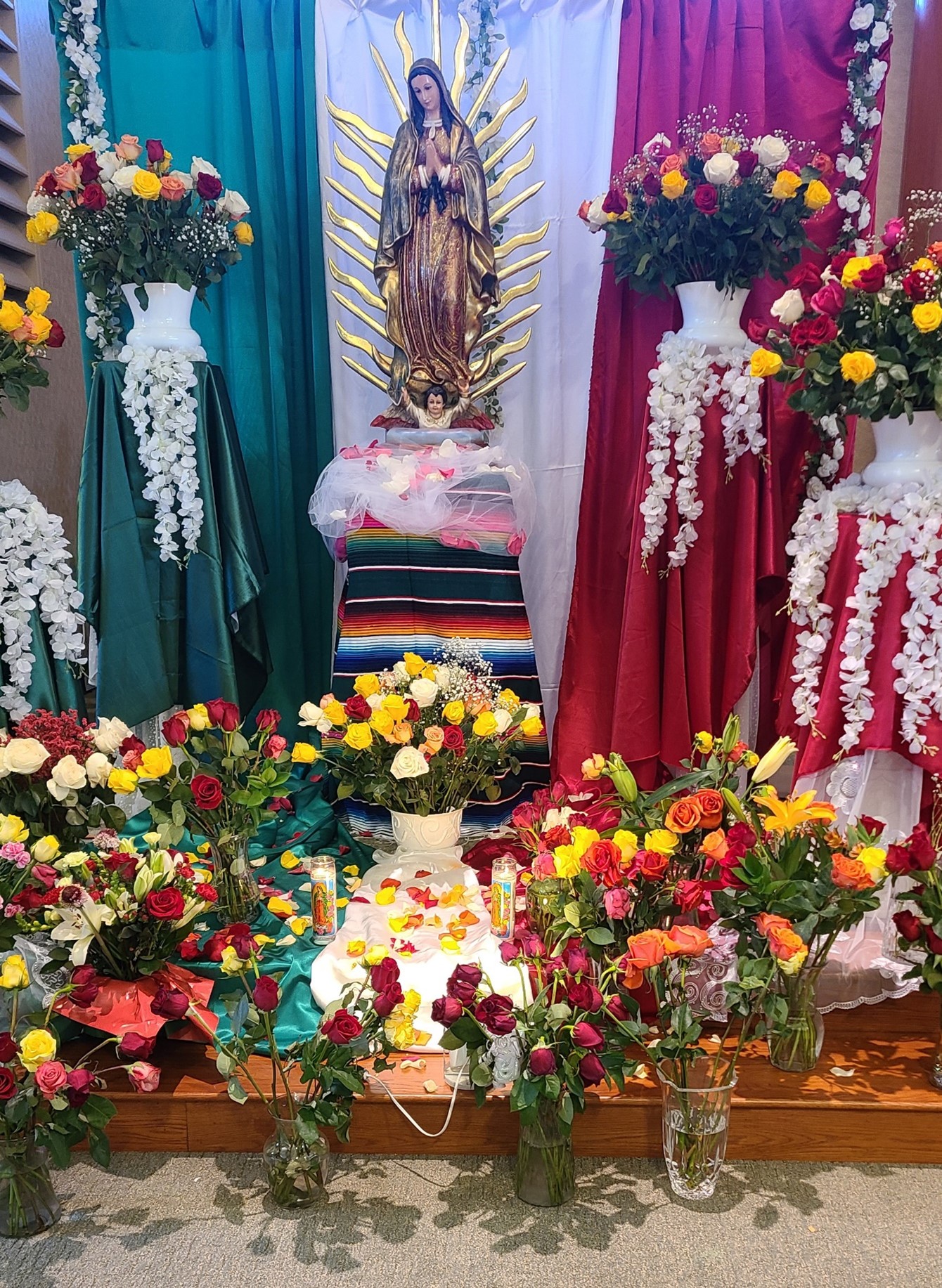 Virgin of Guadalupe statue on her feast day, December 12, 2021.
Virgin of Guadalupe statue on her feast day, December 12, 2021.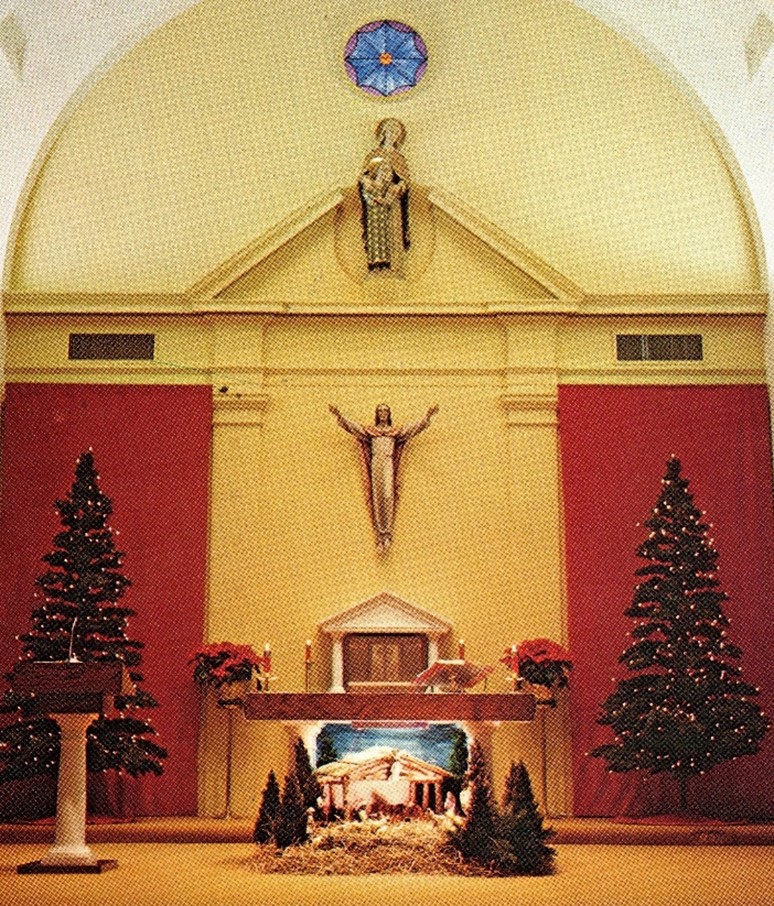 Risen Lord, Old Church, December 1977.
Risen Lord, Old Church, December 1977.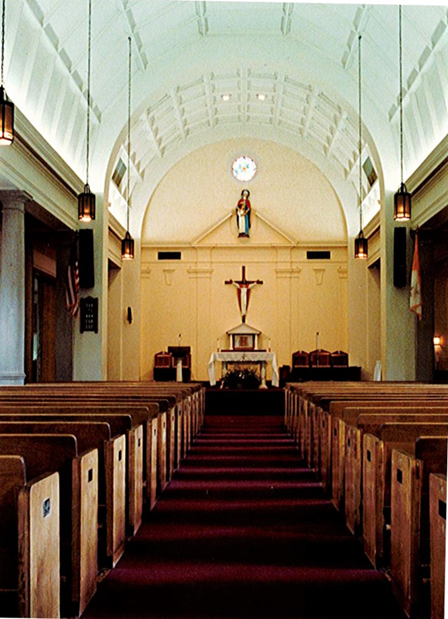 Risen Lord with Cross, Old Church, c. 1980.
Risen Lord with Cross, Old Church, c. 1980.